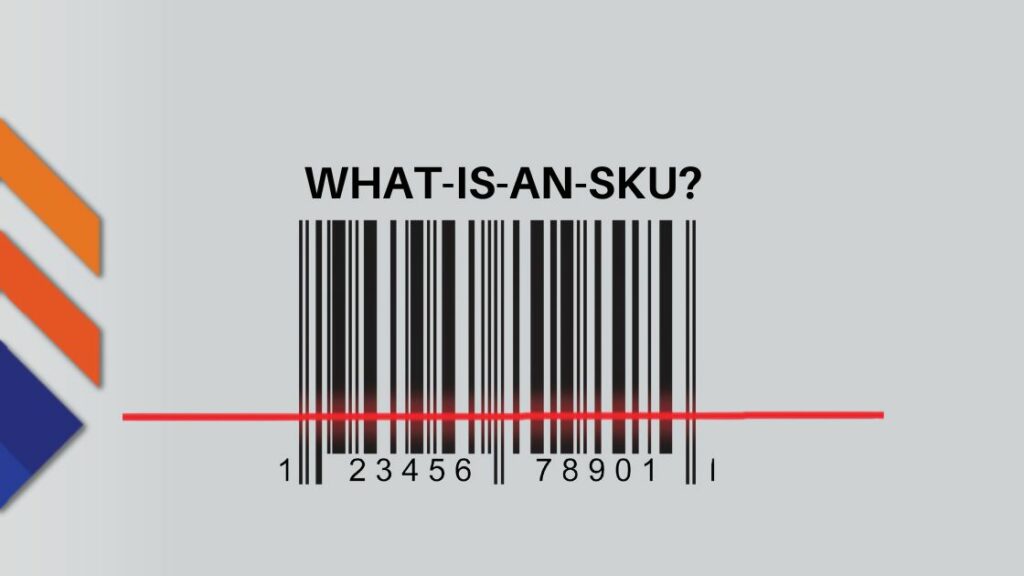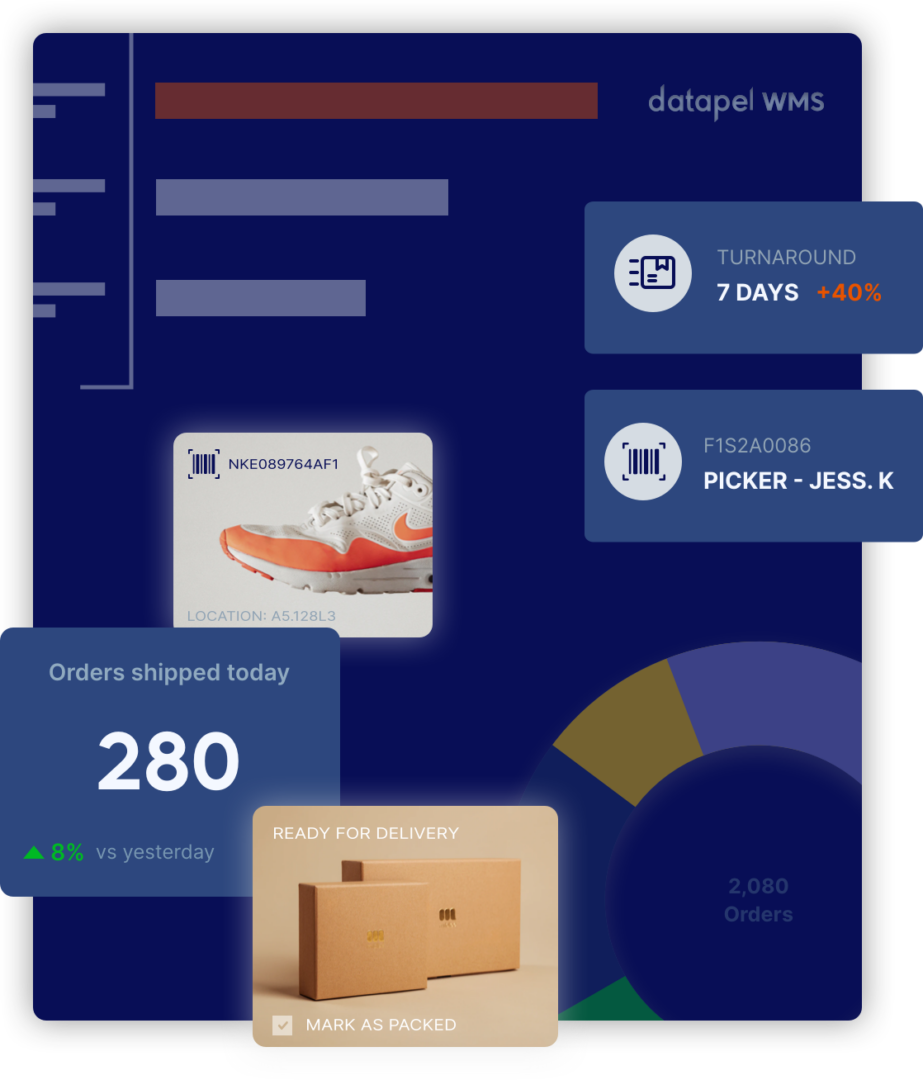The Complete Guide to Stock Keeping Units (SKU): Optimising Inventory Management for Success
Contents
Inventory management is important for all businesses. SKUs are key to categorising and tracking products, streamlining processes and customer satisfaction. Master SKU management and you’ll be ahead of the game.
What is a Stock Keeping Unit (SKU)?

A Stock Keeping Unit, or SKU, is a unique alphanumeric code assigned to each product or variant within a company’s inventory. Unique identifiers are internal identifiers that allow businesses to tell one product from another, track stock levels accurately and manage inventory efficiently.
Each unique identifier corresponds to specific product attributes, such as size, colour or packaging.
Why are SKUs Important?
Effective SKU management has several benefits for businesses:
Better Inventory Control
By assigning SKUs to individual products, businesses can track stock levels, sales and replenishment strategies. This level of control means accurate demand forecasting, fewer stockouts and overstocking, cost savings and happier customers.
Easier Order Fulfilment
SKUs make order fulfilment easier by providing a standard reference for finding products in a warehouse. When orders come in, employees can quickly find the right products by scanning or referencing the stock keeping unit, reducing picking errors and improving productivity.
Better Reporting and Analysis
With a SKU system in place, businesses can generate reports on product performance, sales trends and inventory turnover. This data allows decision-makers to see what’s selling well, make informed buying decisions and optimise pricing and promotions for maximum profit.
Key Components of a SKU
A good SKU has several key components:
Product Identifiers
The SKU should include unique identifiers that represent the product itself, such as the brand, model or part number. These identifiers make each SKU unique and easy to find.
Attributes and Variants
If a product has multiple variants, such as size, colour or style, it’s important to include these attributes in the SKU. This allows for precise tracking and differentiation between similar products.
Packaging Information
For businesses with multiple packaging options, including packaging info in the stock keeping unit can help with inventory management and order fulfilment. This could be packaging size, quantity or packaging type.
Location Codes
If a business has multiple warehouses or storage facilities, including location codes in the SKU can speed up the picking and replenishment process. Location codes give visibility into where products are stored, reducing search time and optimising inventory flow.
Creating Effective SKUs
When creating a unique identifier consider:
Keep it Simple and Short
Choose a short and meaningful SKU format that’s easy to understand and remember. Avoid complicated codes or too many special characters that will confuse you.
Be Consistent
Be consistent across all products and variants. Consistency means uniformity, simplifies inventory management and allows for better data analysis.
Scalable
Plan for future growth and scalability by designing an SKU system that can add new products, variants or changes in business needs. A flexible SKU structure will save time and effort in the long run.
Technology
Use inventory management software that has SKU management capabilities. These tools automate, improve accuracy and provide real-time visibility into inventory and product performance.
Examples
When it comes to creating unique identifiers there are many ways to do it depending on your business needs. Here are a few examples of unique identifier creation to give you some ideas:
Sequential Numeric SKUs
This is assigning a unique numerical code to each product in sequence.
For example, if you have a clothing store and your first product is a T-shirt, you could start with SKU 001, then SKU 002 for the second product and so on. Sequential numeric unique identifiers are easy to manage, especially for businesses with a small product range.
Alphanumeric SKUs
Alphanumeric SKUs combine letters and numbers to create unique identifiers. This allows for more flexibility in including product details or attributes in the SKU.
For example, if you sell electronics you could assign a unique identifier like ELE001 for a TV or ELE002 for a smartphone. The alphanumeric structure allows for better categorisation and differentiation between product categories.
Category-Based SKUs
With this method, you can create SKUs based on product categories or departments. By assigning a prefix or abbreviation for each category you can group and identify products.
For example, if you have a beauty store you could use prefixes like COS for cosmetics, SKN for skincare and HAI for hair care. This makes inventory management easier and quicker to find products within a specific category.
Attribute-Based SKUs
Attribute-based SKUs include specific product attributes or variations within the unique identifier itself. This allows for exact tracking and differentiation between similar products.
For example, if you sell clothing you can include attributes like size, colour and style in the unique identifier. A possible SKU could be CLO001-RD-L for a red T-shirt in a large size. Attribute-based SKUs make inventory management more accurate and order fulfilment more efficient.
Remember the key to creating a unique identifier is to ensure uniqueness, clarity and consistency. Choose a method that fits your business needs, simplifies inventory management and allows for easy product identification and tracking.
SKU Best Practices

To optimise your SKU management follow these best practices:
Auditing and Maintenance
Do a regular SKU audit to identify obsolete or redundant SKUs. Remove or consolidate unnecessary unique identifiers to simplify operations, reduce storage costs and improve overall inventory accuracy.
Standardise Naming Conventions
Use consistent naming conventions for products, attributes and variations. This standardisation makes SKU creation easier and inventory management across the organisation more efficient.
Train Employees on SKU Usage
Train all employees involved in inventory management to understand the importance of SKUs and how to use them. This will reduce errors, increase productivity and create a culture of accurate inventory control.
Monitor and Analyse SKU Performance
Monitor SKU performance metrics such as sales volume, turnover rate and profitability. Analyse this data to identify underperforming SKUs, optimise product assortment and make data-driven decisions to maximise revenue.
Benefits of Efficient SKU Implementation

An efficient SKU system can bring many benefits:
Operational Efficiency
By simplifying inventory management businesses can improve overall operational efficiency. Efficient SKU reduces errors, and manual work and increases productivity.
Customer Satisfaction
Accurate inventory control means fewer stockouts and faster order fulfilment. This improves customer satisfaction, strengthens the brand and builds long-term customer loyalty.
Cost Savings
Efficient SKU management allows businesses to optimise stock levels, and reduce carrying costs of overstocking. Accurate demand forecasting minimises stockouts and lost sales.
Unidentified Stock

Running inventory without a unique identifier like a Stock Keeping Unit (SKU) can bring many disadvantages and challenges. Let’s see some of them:
1. Limited Inventory Visibility
Without a unique identifier, it’s hard to track and identify individual products within your stock accurately. This lack of visibility means confusion, errors and inefficiencies when managing your inventory.
You can’t determine each product’s quantities, locations and attributes so you can’t fulfill customer orders on time and accurately.
2. Inaccurate Stock Control
Without a unique identifier, it’s hard to control stock accurately. Without distinct codes or labels for each product, you can’t differentiate between similar products or variants.
This can lead to stock count errors, inaccurate replenishment decisions and challenges in maintaining optimal stock levels. You may experience stockouts or overstocking, lost sales or increased holding costs.
3. Complicated Order Fulfillment
Without a unique identifier system in place order fulfilment becomes a complicated and time-consuming process. Finding specific products in your stock becomes hard and employees can’t find the right products for each order.
This means order-picking errors, delays in shipment and unhappy customers.
4. Inefficient Reporting and Analysis
Without a unique identifier, you can’t generate accurate reports and do meaningful data analysis. Without a consistent and standardised way to track product performance, sales trends or inventory turnover you can’t make informed business decisions.
This lack of data-driven insights can’t help you to optimise pricing, find top-performing products or streamline your product assortment.
5. Poor Customer Experience
Running without a unique identifier system can have a direct impact on your customer experience. Inaccurate stock control, order fulfilment errors and delays can mean unhappy customers who will take their business elsewhere. Negative customer experience can damage your brand and lost revenue and customer loyalty.
Conclusion
In today’s world of business, SKU management is key to inventory control. Get your stock keeping unit system right and you’ll streamline operations, delight customers and make more money.
Remember to keep your unique identifiers simple, consistent and scalable and use technology to automate and get real-time visibility into your inventory. And you’ll be ahead of the game in no time.
FAQ’s
What is a stock keeping unit (SKU)?
A Stock Keeping Unit (SKU) is a unique alphanumeric code assigned to each product or variant in a company’s inventory. It’s an internal identifier that allows businesses to differentiate between similar items, track stock levels accurately and manage inventory efficiently. SKUs are tied to specific product attributes such as size, colour or packaging.
What is an example of an SKU?
An example of an SKU will depend on how you create it. For example:
- Sequential Numeric SKU: A T-shirt in a clothing store could be SKU 001 and the next product would be SKU 002.
- Alphanumeric SKU: A television in electronics could be ELE001 and a smartphone ELE002.
- Category-Based SKU: In a beauty store, cosmetics could be COS001, skincare SKN001 and hair care HAI001.
- Attribute-Based SKU: A red large T-shirt in clothing could be CLO001-RD-L.
What does SKU mean in logistics?
In logistics, an SKU is key to tracking and managing inventory. It helps in identifying, locating and managing products in a warehouse, streamlining order fulfilment and maintaining accurate stock levels. SKUs enable efficient reporting and analysis to aid demand forecasting and inventory optimisation.
Why is SKU important?
SKUs are important because:
- Inventory control by allowing precise stock level monitoring, sales tracking and replenishment planning.
- Order fulfilment by providing a standardised reference for products, reducing picking errors.
- Reporting and analysis to generate detailed reports on product performance and sales trends to make informed decisions.
Where is the SKU on a product?
The SKU is usually found on the product label or packaging. It can be an alphanumeric code and is often accompanied by a barcode that can be scanned for easy identification and tracking in inventory management systems.
How do I get an SKU for my product?
- Keep it Simple and Clear: Make it short and meaningful.
- Be Consistent: Same structure across all products and variants.
- Scalable: Design a system that can add new products and adapt to business needs.
- Leverage Technology: Use inventory management software with SKU management to automate and get accurate.

In my role, I oversee the development of insightful blogs that delve into the intricacies of warehouse management. Each piece reflects my dedication to empowering businesses through informative content. Through my team’s extensive experience in the industry, we aim to bring clarity to the complexities of WMS, helping businesses make informed decisions.
Join me on a journey through the ever-evolving landscape of warehouse technology as we explore the latest trends, industry insights, and practical tips to streamline your operations. Feel free to connect, and let’s embark on a collaborative exploration of how WMS can redefine your business efficiency.
Cheers to innovation, efficiency, and the exciting world of warehouse management!







